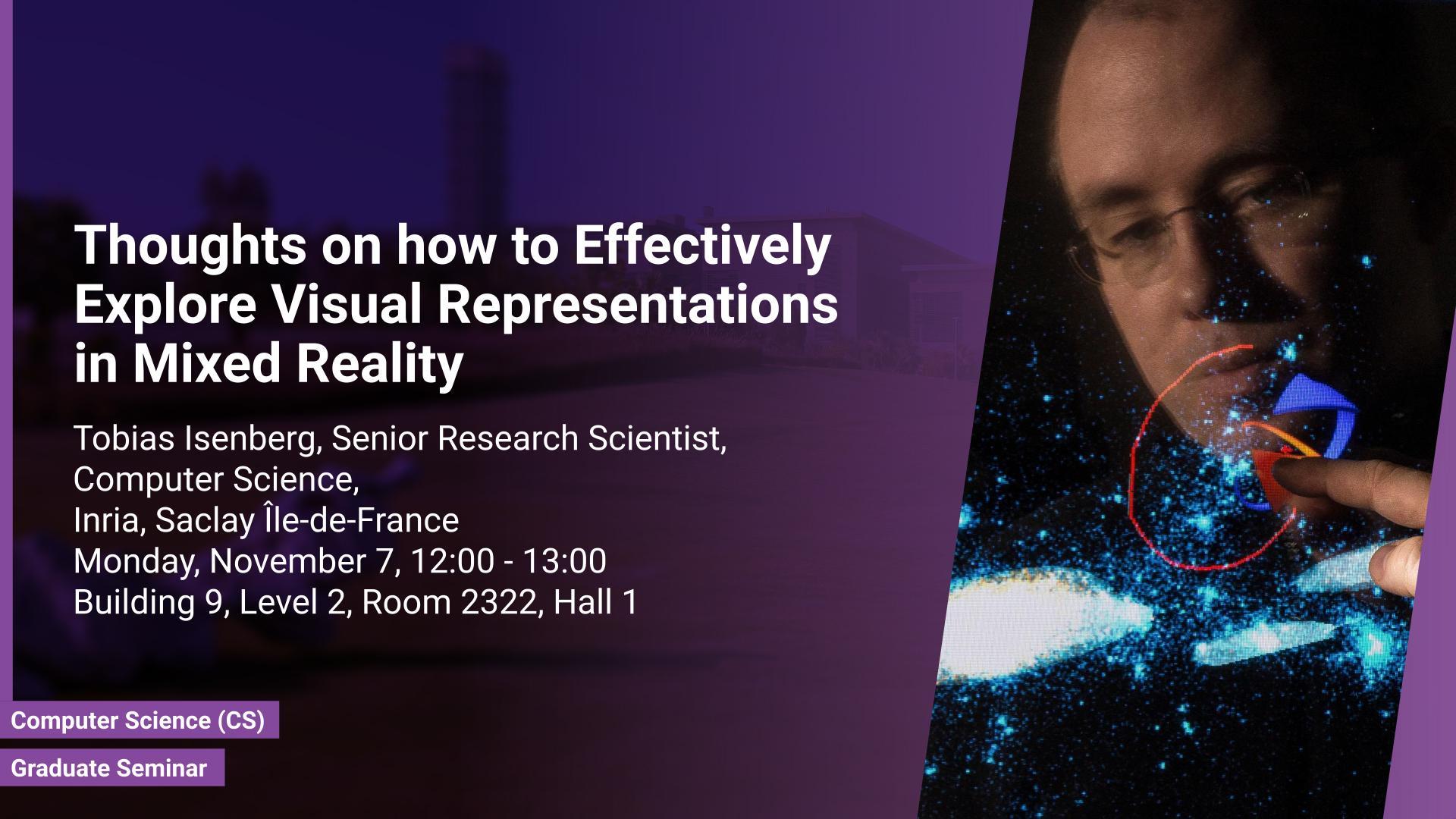Abstract
Immersive environments are starting to become a viable alternative to traditional workstation-based settings for the exploration of data. The recent surge of head-mounted VR and AR technology, driven largely by the games industry, has made it possible for virtually any research lab to have access to this technology, in contrast to past CAVE-like installations. Yet while it is clear that the stereoscopic display of data has numerous advantages and it is relatively easy to exploit it for data visualization, the actual interaction within such environments remains difficult. In this talk I will report on various research projects that I carried out with my students to better understand the interaction landscape and will report on lessons we learned. I will focus mostly on AR-based setups with application examples from physical flow visualization, molecular visualization, visualization of particle collisions, biomolecular dynamics in cells, and oceanography. I will show interaction techniques that rely on purely gestural interaction, phones or tablets as input and control devices, and hybrid setups that combine traditional workstations with AR views. I will discuss navigation, data selection, and visualization system control as different interaction tasks. With this overview I aim to provide an understanding of typical challenges in immersive visualization environments and how to address some of these challenges.
Brief Biography
Tobias Isenberg is a senior research scientist at Inria, France. Previously he held positions as post-doctoral fellow at the University of Calgary, Canada, and as assistant professor at the University of Groningen, the Netherlands. His research interests include scientific visualization, illustrative and non-photorealistic rendering, and interactive visualization techniques. He is particularly interested in interactive visualization environments for 3D spatial data, illustration-inspired visualization, as well as the benefit, use, and control of abstraction in visual data representation.


